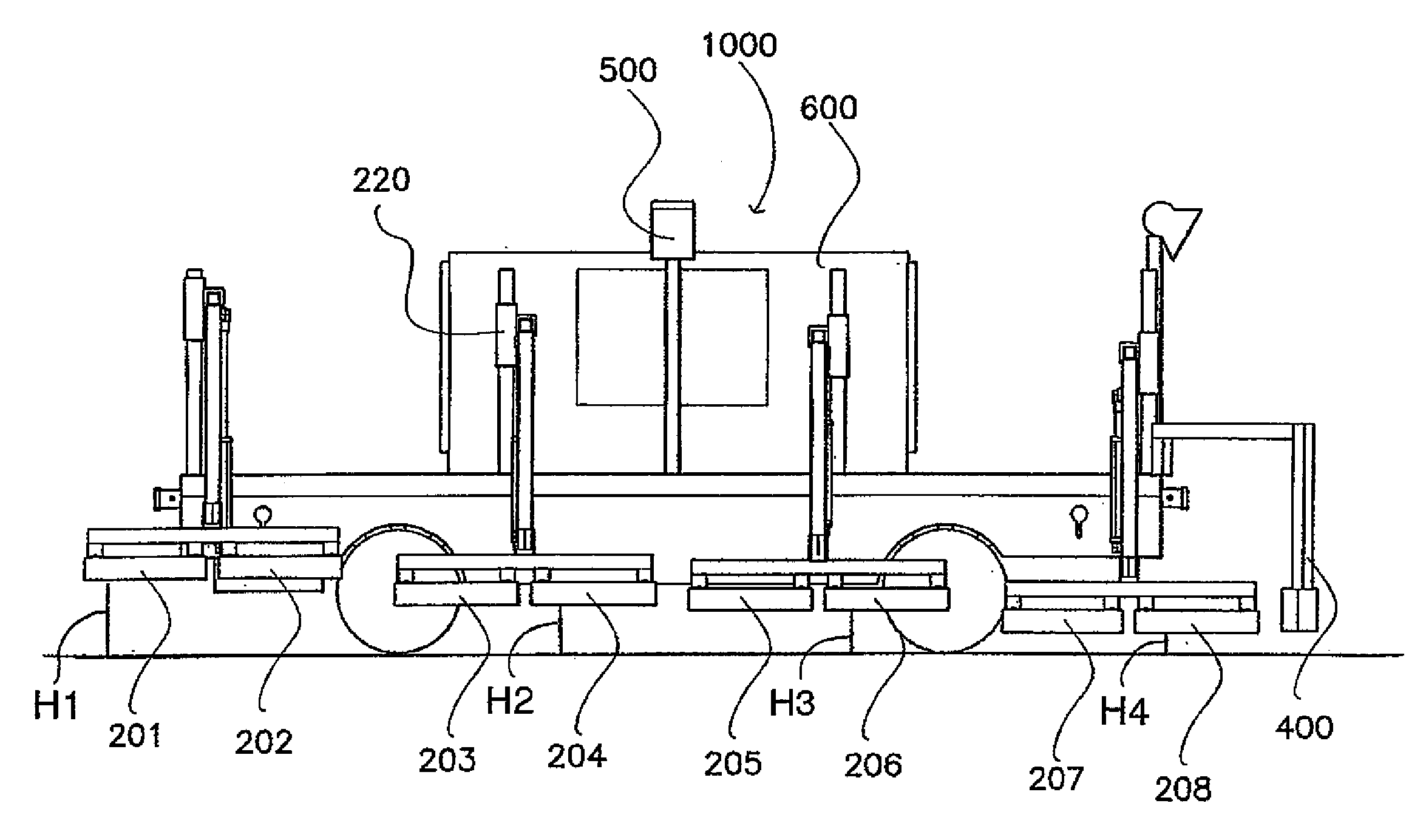Seam sealer apparatus and method of sealing seams on an asphalt road
- Summary
- Abstract
- Description
- Claims
- Application Information
AI Technical Summary
Benefits of technology
Problems solved by technology
Method used
Image
Examples
Embodiment Construction
[0018]The present invention will now be described more fully in detail with reference to the accompanying drawings, in which the preferred embodiments of the invention are shown. This invention should not, however, be construed as limited to the embodiments set forth herein; rather, they are provided so that this disclosure will be complete and will fully convey the scope of the invention to those skilled in the art.
[0019]FIGS. 1, 2, 3 and 4 illustrate conceptually a seam sealer 1000 according to the invention. The seam sealer 1000 is moving alongside a seam area S in a roadway, in front of an asphalt paver 2000 that is laying down fresh hot asphalt. The seam sealer 1000 is shown being moved along the roadway by means of a tow vehicle V. Both the paver 2000 and the tow vehicle V are conventional equipment and, as such, are not included within the scope of the invention. The seam sealer 1000 may be constructed as a towable platform or trailer that is towed by a tow vehicle V or be in...
PUM
 Login to View More
Login to View More Abstract
Description
Claims
Application Information
 Login to View More
Login to View More - R&D
- Intellectual Property
- Life Sciences
- Materials
- Tech Scout
- Unparalleled Data Quality
- Higher Quality Content
- 60% Fewer Hallucinations
Browse by: Latest US Patents, China's latest patents, Technical Efficacy Thesaurus, Application Domain, Technology Topic, Popular Technical Reports.
© 2025 PatSnap. All rights reserved.Legal|Privacy policy|Modern Slavery Act Transparency Statement|Sitemap|About US| Contact US: help@patsnap.com



